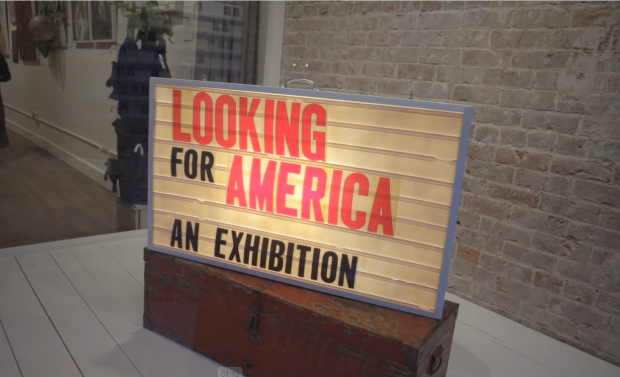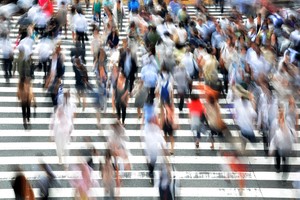How Drawing, Designing, and Directing Documentaries May Depolarize America

This blog was written by Aaron Kohrs (Center) of the Braver Angels Washington D.C. Alliance. You can contact him at aakohrs121@gmail.com. It was edited by James Coan (Center), Co-Chair of the Braver Angels DC Alliance. You can contact him at jcoan@braverangels.org.
When one thinks about politics, there are likely mental images, associated with mass social movements, that pop into the mind. The power of the Arts can move us to tears or have a change of heart. Could purposeful artistry of some medium ever be used to depolarize politics? A panel of artists from different political and artistic perspectives, led by D.C. Braver Angels Co-Chair James Coan, explored the idea of depolarization through the Arts.
According to Coan, we have all been touched and moved by politically-motivated art—from both sides. Liberals have used same-sex couples featured in movies and pop songs to promote the gay rights movement. Conservatives utilize ultrasound photos of unborn babies to promote the pro-life movement. Images of “Americana”, or patriotic displays of the flag or national colors, decorate our homes, especially during holidays. The Arts are everywhere one looks, and also, therefore, the expression of some political or social belief. But could the Arts be used for a greater, common purpose in depolarizing modern politics?
At this panel, Boston-based peace artist and documentarian Jamil Simon, D.C.-based social sculptor and cultural curator Philippa Pham Hughes, and painter Roopa Dudley from the Baltimore area discussed how their art could be used to reduce polarization—including the common belief that we are all Americans, regardless of partisan affiliation, and therefore should embrace “out of many, one.”
Simon, the documentarian, has traveled across the world creating media tools, like films and news media, that aim to show common human unity and reduce tensions in war-ravaged countries. He has produced video pieces and documentaries in collaboration with NGOs and focused on peace-building in Colombia, Ireland, Sri Lanka, and Burundi, for example. Simon believes telling the real stories of individuals and showcasing them as a “group narrative” can utilize the power of purposeful depolarization in art.
Simon praised the Braver Angels Documentary that highlighted “people with disparate views who share how they feel about each other” and how, like any peace-building media, emphasized a conciliatory process that involved dialogue and imagining “life in someone else’s shoes.” Simon also asserts that there is “nothing wrong with conflict” and it is how we handle conflict—with a focus on the other person’s humanity—that matters. Media, he says, should promote this nuance that conflict, through dialogue and shared commonality as a pretext, can create better political solutions.
Meanwhile, Hughes, the social sculptor and cultural curator, brings democratic engagement and civic participation to the artistic sphere through place-making. She creates rooms—often with common scenes from civic life, like voting sites—for people to gather and share in the power of civil discussion, as seen with her project Looking for America. One of her most poignant events was “Blueberries and Cherries”, which invited politically diverse guests to break bread and share conversations over a home-style meal. Yes, the dessert served melted into an appropriate purple color!
Hughes also proposes the idea that the Arts, as she sees it, is a conversation-starter, but does not actually “depolarize” our national civic discourse. Art simply “brings people to the table.” It is up to the participants to choose to have constructive dialogue and engage with each other in a civil, respectful, and open-minded way.
Perhaps one of the most well-known stereotypes about artists is their political leaning—liberal, very liberal. Painter Roopa Dudley of Severn, Md., shares her experience as a mold-breaking artist with some conservative views: she has never been “canceled” by other, more left-leaning artists, but her work has definitely rocked the boat. She painted “Safe Space”, which shows a baby floating in a glass bottle and alludes to her pro-life beliefs. But Dudley is not to be pigeonholed into one political corner—she is pro-immigrant as well and that is reflected in her “Immigrants” painting showing two different women in “Americana”-style clothing.
Both Dudley and Hughes share positive stories of those in their immediate families—Dudley’s father and Hughes’ mother —who have very divergent political views from them. In Dudley’s case, the bond was deeply emotional, while Hughes’s involves more understanding of her mom’s positions
Dudley shares that her father, a “staunch Democrat until the day he died,” could not understand her pro-life views on abortion. Yet, she and her father, she says, had a close connection and she never considered differences on this issue to separate her from her much-loved father. Dudley says she would challenge her father’s view but never doubted the strength of her relationship with him.
Hughes says she struggled with her mother’s seeming opposition to anything remotely left-leaning. Now, after years of active dialogue, Hughes at least understands her Vietnamese immigrant mother views left-leaning politics in America as a manifestation of the oppressive communism her mother experienced in Vietnam.
Coan, the panel moderator, wrapped up the panel by saying that his view on the topic is that the Arts, through meaningful created imagery and self-expression, can change the world if we use a medium purposefully and grounded in principles likely to lead to depolarization, highlighting commonality, uniqueness of individuals rather than stereotypes, and successful relationships as people come together successfully as friends, family members, and collaborators. Leveraged well, the Arts seemingly can be both unifying and democratic: something we can appreciate and can lead to common understanding, yet also something that we can each paint with our own brush.

May 7th, 2024

May 7th, 2024


May 6th, 2024